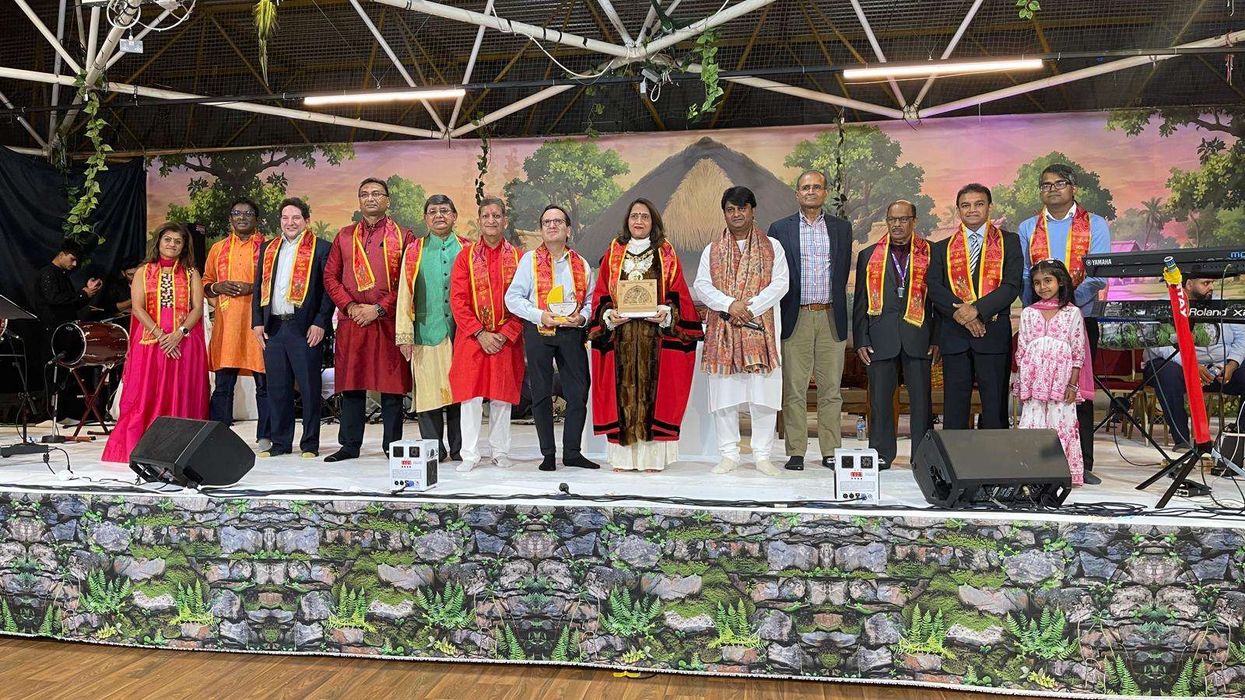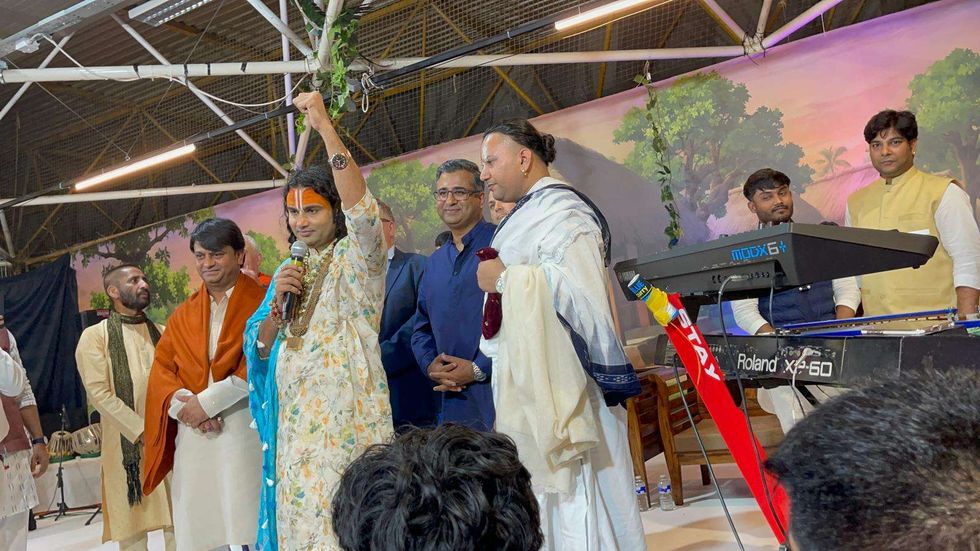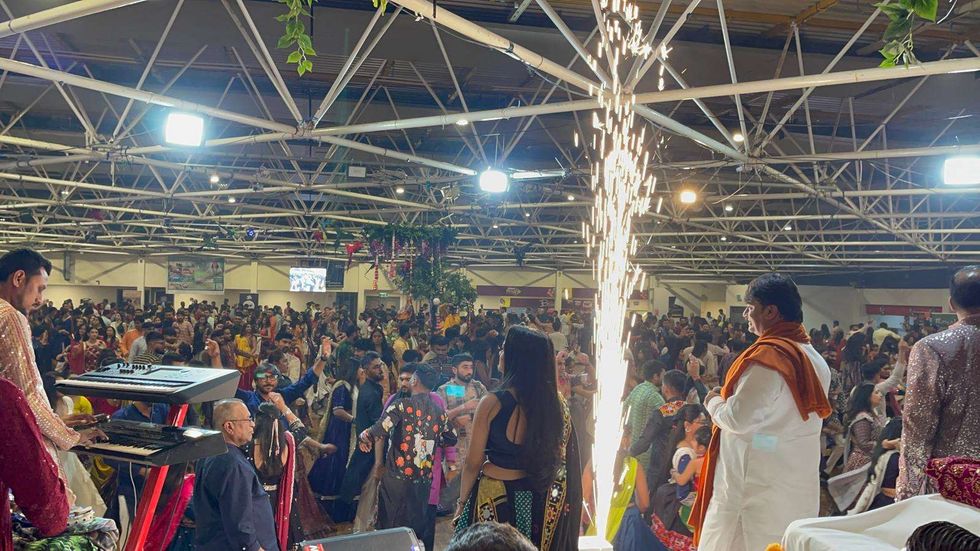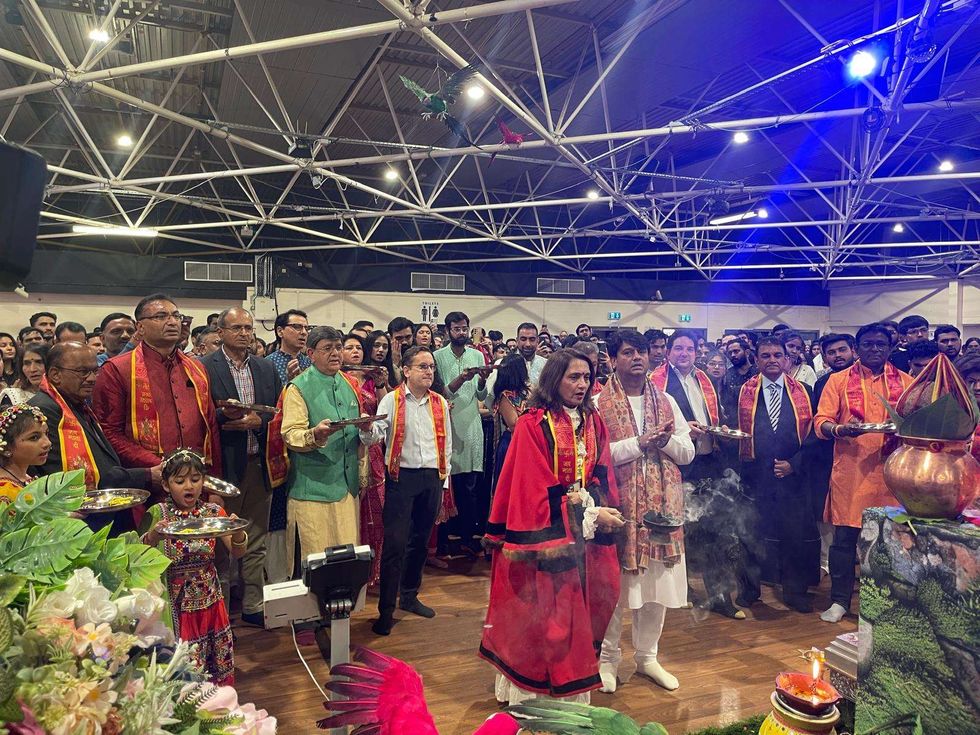The Gurjar Hindu Union has concluded a hugely successful week-long Shrimad Bhagwat Katha at its Apple Tree Centre temple in Crawley, West Sussex, drawing around 14,000 attendees across seven days.
Held from Friday 24 May to Friday 31 May 2025, the spiritual event featured daily discourses by the esteemed Pujya Bhaishri Rameshbhai, attracting approximately 2,000 devotees each day. His captivating delivery and deep spiritual insight resonated strongly with attendees, creating an atmosphere of devotion and reflection.
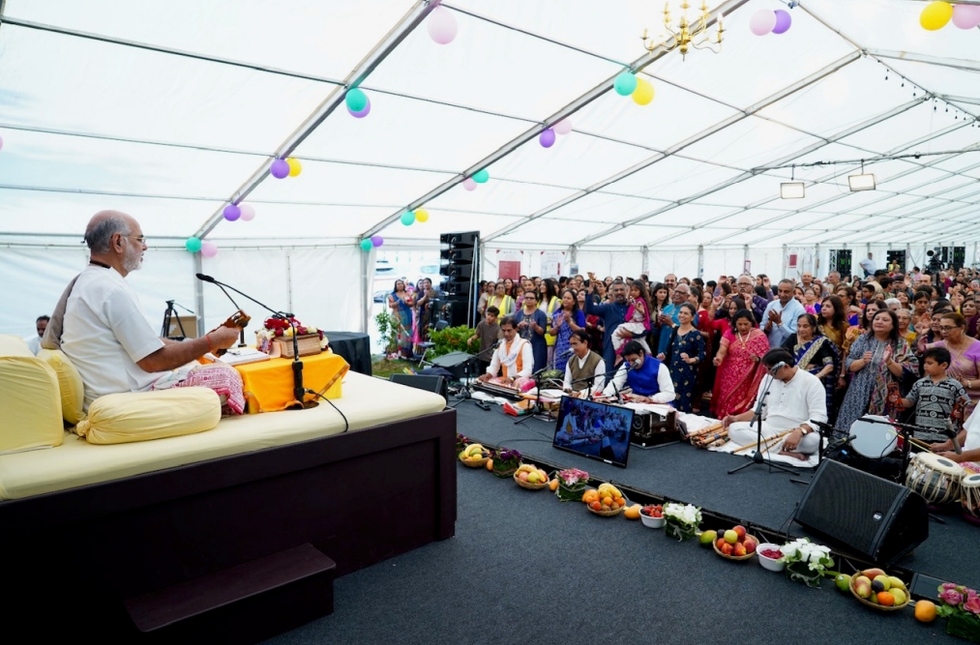
A key focus of this year’s Katha was on promoting holistic health, wellbeing, and social connection. Using the teachings of the Bhagwat Purana, Pujya Bhaishri Rameshbhai emphasised the importance of inner peace, healthy lifestyles, and building stronger community bonds. In doing so, the Katha also sought to address the growing issue of loneliness within society.
The event served not only as a religious gathering but as a communal space where people of all ages could connect, support each other, and find spiritual rejuvenation. Many described the experience as deeply moving and transformative.
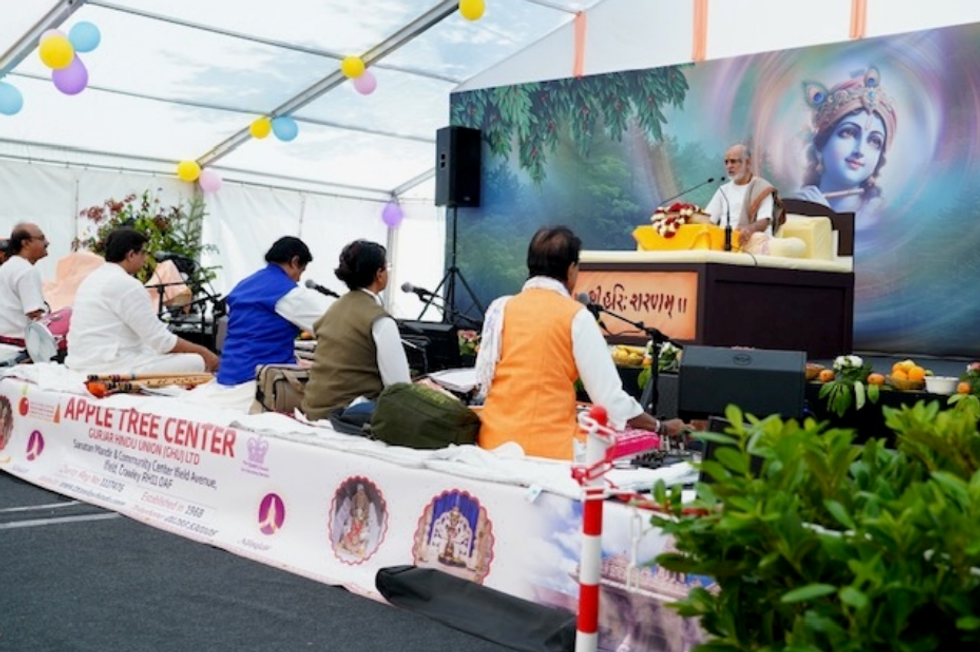
A spokesperson for the Gurjar Hindu Union said: “The sheer number of attendees each day is a testament to the spiritual hunger within our community and the profound impact of Pujya Bhaishri Rameshbhai’s discourse. We are proud of how this event supported health, wellbeing, and social cohesion.”
The Union expressed sincere thanks to Pujya Bhaishri, the volunteers, and all attendees for their contributions to this uplifting and unifying occasion.






